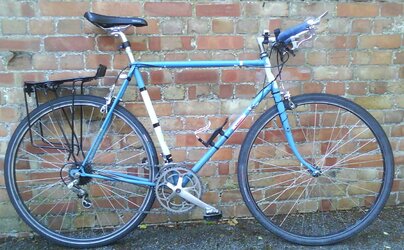you can buy seatpost shims which would allow you to bring a thinner post up to 27mm, I would be loathe to try to jam too big a diameter in, particulary as you could be going through a tweaking phase.
I agree with trying what you can first rather than spending, been there, done that and recycled the stuff at 'great' personal loss

Don't forget that raising or lowering the bars will alter the reach as well, as a function of the HT angle. As FF says Burrows, and others, have had a good dig at such things as KOPS. Not that they aren't useful but that fits tend to be formulaic and fit you for having a good day, if they include a dynamic component at all. I'd maybe think about dropping your saddle slightly from the highest comfortable point. The saddle height isn't an absolute number it's a small range and the highest point is most effective when you're loosened up, feeling good and pedalling well.
That said, if you get the saddle where you're really happy with it but still not comfy enough on the bars, don't assume lifting/shortening the reach will automatically be the answer. If the saddle is further back than normal then you may need to lengthen the reach. I bought a really short stem to sort this sort of thing once, the problem was very minor, but I'd gone the wrong way. The problem was that my saddle position wanted me longer and lower and I was having to force myself back re the bars. I thought I had it all figured, hence buying the short stem, didn't see the counter intuitive bit re reach.
I had a Surly Xcheck, horizontal geometry and a Giant CRS Alliance, compact geometry, both set up very similar and with only 4mm difference in effective top tubes. But different HT and ST angles and I found the resulting bits around riding, in particular getting a foot down, very different. The compact Giant always seemed easier and more natural than the Xcheck. I don't know if this was just the top tube difference, BB height playing a factor, different saddles, etc...but it was definitely there.



 the bit that will change is your knee over pedal spindle relationship, aka KOPS, which may be impossible to achieve from this frame. However there are plenty of theories that say KOPS is garbage as an absolute and only happens to work as a starting point by dint of accident. The real test of whether you can do this or not is how your knees/butt feel, they'll soon tell you if it's not working. Also worth bearing in mind that by moving the saddle back and down you're creating a longer/lower posture and may not need to move the bars back/up by as much as you may think, or even not at all. If you look at some of the TdF setups you'll see some of the riders have the saddle right back on setback seatposts, I believe I saw 115mm as a number for Andy Schleck last year. This should mean they can get down to a lower bar position without the upper body taking too much strain. I also read that the cyclists with weedier upper bodies will have the saddle further back than those with more core strength and upper body musculature.
the bit that will change is your knee over pedal spindle relationship, aka KOPS, which may be impossible to achieve from this frame. However there are plenty of theories that say KOPS is garbage as an absolute and only happens to work as a starting point by dint of accident. The real test of whether you can do this or not is how your knees/butt feel, they'll soon tell you if it's not working. Also worth bearing in mind that by moving the saddle back and down you're creating a longer/lower posture and may not need to move the bars back/up by as much as you may think, or even not at all. If you look at some of the TdF setups you'll see some of the riders have the saddle right back on setback seatposts, I believe I saw 115mm as a number for Andy Schleck last year. This should mean they can get down to a lower bar position without the upper body taking too much strain. I also read that the cyclists with weedier upper bodies will have the saddle further back than those with more core strength and upper body musculature.